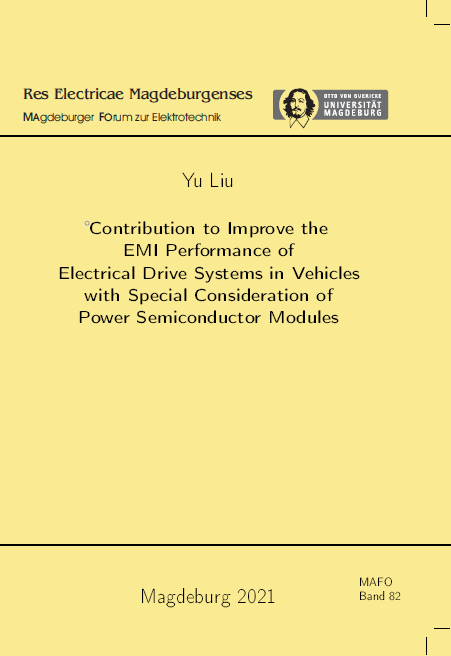Vol. 82 (2021): Liu, Yu: Contribution to improve the EMI performance of electrical drive systems in vehicles with special consideration of power semiconductor modules

This work serves as a contribution to improve the EMI performance of electrical drive systems in vehicles; the focus is on the power semiconductor module for automotive application. For a better and deeper understanding of the conducted EMI source, the conducted EMI mechanisms and effects in the drive system are investigated through simulations as well as measurements with special consideration of power modules: The influence of the diode recovery effects on the EMI performance is quantitatively analyzed with different load currents, as well as with different types of diodes, e.g. SiC Schottky barrier diode. Through the simulation, the influence coming from the power module to the system is clarified; the importance of different factors inside and outside of the power module regarding EMI performance are therefore evaluated. To validate the simulation results, the setup and test bench for a conventional EMI measurement for the typical automotive application are presented. Through the measurement results it is proven that the simulation models are usable under certain boundary conditions for future power module designs with regard to the EMI prediction. Based on the understanding and the conclusions from the simulation and measurement results, concrete EMI optimization concepts for an inherently low-interference power module are developed and realized. The EMI performance as well as the feasibility of the sample modules are compared and evaluated under different criteria from the power module manufacturer’s point of view. Besides, the dynamic and short-circuit performances of the sample modules, regarding to the current distribution on the semiconductor chips, are characterized. A novel test procedure is introduced in this work, by which it is possible to estimate the conducted EMI performance of power modules without building the whole test setup like in a conventional EMI measurement. This characterization can subsequently be used in the phase of converter development to select a suitable device and evaluate the expected effort to comply with EMI standards.
ISBN: 978-3-948749-01-9
DOI: https://doi.org/10.24352/UB.OVGU-2021-055

